Discover the best plants for terrariums with this curated list of 18 remarkable varieties. These are ideal for every plant enthusiast desiring a closer connection with nature right in their living spaces.
Terrariums, a clever and efficient solution, are here to ease your indoor gardening concerns. Boasting several benefits, they not only enrich your space with nature’s beauty but also bring a unique aesthetic charm to your home.
Furthermore, these terrarium plants are particularly suitable for those who might not have a green thumb yet still wish to infuse their living environment with vibrant, living greenery. The magic of terrariums turns even the most gardening-challenged among us into successful indoor horticulturists.
Table of Contents
What are Terrariums?
Terrariums are small-sized, enclosed environments for certain plants and are usually encased in transparent materials like plastic or glass.
They are often referred to as mini gardens and require little to no maintenance making them ideal for both brown and black thumbed people.
Think of terrariums as aquariums, however instead of the enclosed casing to be filled with fish of different species, it is replaced with a combination of different plants.
The purpose of terrariums is to serve as a sort of mini ecosystem for plants providing a simulated, controlled version of the natural environment of plants with its very own water cycle.
Terrariums are broadly classified into two categories. They can either be closed or open. In closed terrariums, the container is either fully sealed or mostly sealed with removable lids.
Since terrariums are usually made with transparent materials, they tend to allow the passage of light and heat. During the day, light passes through the transparent walls allowing for photosynthesis to take place.
The energy from the light converts carbon dioxide into oxygen releasing it into the terrarium and promotes the growth of sugar (glucose) during the process of photosynthesis. The heat then tends to evaporate the existing moisture present in the soil and plants creating a water cycle.
This creates a self-sustaining environment for the plants as when the plants and the soil release water vapor, it condenses on the walls of the container or vessel and dribbles right back to the soil.
So basically, the hothouse-like nature of closed terrariums recycle water instead of evaporating it to the atmosphere. Closed terrariums do not require constant watering and are suitable for tropical, moisture loving plants.
Although it is called a closed or sealed terrarium, it has a removable lid or cork which can be opened occasionally to allow excess moisture present in the enclosure to evaporate, preventing mold formation.
In open terrariums, the container has an opening that allows for the circulation of air. Unlike the closed terrarium, this type of terrarium is not self sufficient.
It requires frequent watering as it does not trap as much moisture as a closed terrarium. The frequency of watering though, does depend on the plant and the environmental conditions.
Open terrariums are best suited for plants that have a preference for arid conditions and do not require a moist environment such as temperate plants.
They also require soil, charcoal, rocks and pebbles arranged in layers as each layer has a role in maintaining an excellent environment for the growth of plants.
There are still other types of terrariums namely; dish terrariums, orchid terrariums, succulent terrariums, hanging terrariums, etc which you can use to develop a terrarium fitting to your taste and space.
Terrarium Plants
The best thing about terrarium plants is that they require the least maintenance and look amazing in any setting. Small and slow growing plants are preferably planted in terrariums. If the plant grows at an extremely rapid rate, it can outgrow the terrarium.
Also, it is important to note that the type of plants for your terrarium must match the type of terrarium you have chosen for optimal growth.
For instance, closed terrariums are best suited to tropical plant varieties such as ferns, air plants, moss and orchids because they are humidity loving plants.
Open terrariums are best suited for plants with less moisture requirements and prefer less humidity like succulents and cacti. Most terrarium plants include ferns, carnivorous plants, air plants, succulents, peperomia, dwarf plants and many more.
Best Plants for Terrariums
1. Air Plant

- Botanical name: Tillandsia
- Other names: Life plant
Ever wondered if there are plants that do not require soil to grow? Well, air plants have this unusual characteristic and are gaining popularity as houseplants.
Air plants are members of the Bromeliad family and are native to the West Indies, Southern part of the United States, Central and South America.
They are epiphytic plants; they tend to grow on other plants, particularly tree branches. However, they only use other plants as a form of support and do not draw sustenance from them.
One distinctive feature about the air plant is its ability to cling to any surface like trees, rocks, wires, etc.
This plant derives all its nutrients and moisture from the atmosphere. The leaf modification in the form of small scales on the thin leaves enables the plant to absorb whatever it needs for optimal growth.
In the mature stage of this plant, air plants bloom to reproduce. They form flowers which vary in colors and these colors often tend to attract pollinators like hummingbirds and bats.
Over time, the flowers produced begin to die gradually, and they are then cut off to promote new growth. The air plant can mostly be seen as ornamental pieces in terrariums.
2. Aquamarine Pilea
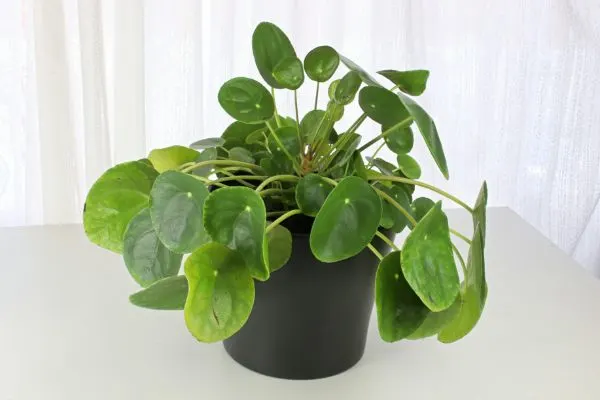
- Botanical name: Pilea glauca
- Other names: Aquamarine plant, baby tears, Chinese money plant, fairy dust plant, gray artillery plant, silver sprinkles plant
The aquamarine pilea is a slow-growing, perennial, tropical plant native to the rainforests of South and Central America. This plant has a trailing habit and is from the nettle family Urticaceae. It has small, beautiful blue-green foliage with a tinge of silver and warm reddish colored stems.
It is an evergreen plant that produces small inconspicuous flowers which can be pink, orange or white in color and can bloom all year round.
As earlier said, this plant is a tropical plant therefore it prefers warm temperatures and high humidity to thrive. It does not do well in cold temperatures, otherwise it would go into hibernation, which is why this plant is mostly grown as a terrarium plant.
It is susceptible to attack from pests like whiteflies, thrips, mealybugs, spider mites, fungus gnats and scale bugs. So, this plant should be cared for and properly inspected regularly.
3. Asparagus Fern
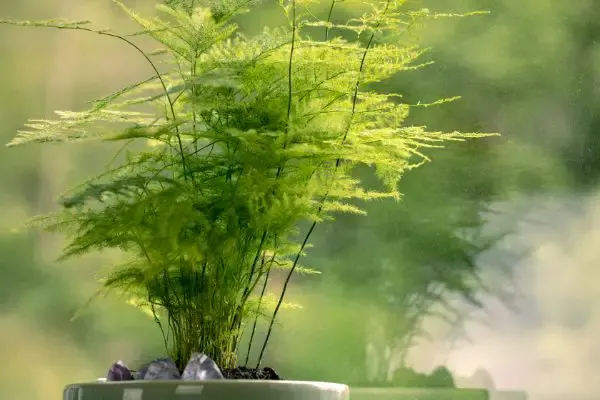
- Botanical name: Asparagus aethiopicus
- Other names: asparagus grass, lace fern, climbing asparagus, foxtail fern, fern asparagus
The asparagus fern is a herbaceous, perennial, evergreen climbing plant native to the Cape province and Northern province of South Africa.
Despite its name, they are not actually true ferns. Depending on the classification system used, they are said to hail from the family Asparagaceae or the lily family Lilaceae.
The native habitat of asparagus ferns consists of a moist forest or woodland type of environment. Branches growing from the sides of the stem tend to grow in a non-uniform pattern with the leaves not being actual leaves but cladodes.
Cladodes are often called leaf-like branches and it is an aerial modification of a stem, green and fleshy in nature in which the leaves do not develop but the stems become flattened and functions as a leaf.
On closer inspection, the true leaves of this plant are found on the scales that grow on the surface of the Cladodes. The leaves are small and needle-like with the leafage being quite delicate, which is quite similar to the asparagus plant.
It can grow as high as 1 to 3 feet and spread as wide as 18 to 36 inches with the stems being either green or brown in color. The foliage of this plant tends to arch forward which is fern-like and is quite lace-like as well, with tiny thorns along the stem of the plant.
The asparagus fern tends to produce small, white or pinkish-white delicate flowers along the stems. Each flower has 3 petals and 3 sepals that are alike in appearance.
The flowers are quite inconspicuous although they give off a fragrant aroma and they later develop to form red, glossy berries which tend to attract birds.
The berries of the asparagus fern are toxic to pets like cats and dogs as well as humans but not birds so they are not to be ingested.
They prefer warm temperatures and places of high humidity. Although they can tolerate low temperatures, they cannot withstand it for long periods.
It grows well in bright, indirect light and moderately moist soil rich in humus. This plant has thick and fleshy storage roots where it can store water and food, so it can withstand occasional negligence.
The asparagus fern makes for an excellent houseplant and does well when grown in terrariums and since it requires places of high humidity, a closed terrarium is highly recommended.
4. Baby’s Tears
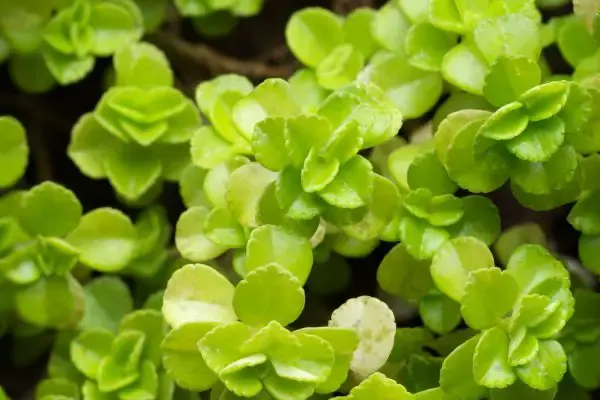
- Botanical name: Soleirolia soleirolii
- Other names: Angel’s tears, baby tears, Corsican creeper
Baby’s tears is a herbaceous, perennial plant from the nettle family Urticaceae. It is found in tropical environments and is native to the Mediterranean islands of Corsica and Sardinia.
In its mature stage, this plant can grow as tall as 1 to 5 inches and as wide as 36 inches. Oftentimes, it has been said to resemble moss due to their similarities in their small, lush leaves.
In late spring to early summer, baby’s tears bloom to produce inconspicuous pinkish white or creamy ivory colored flowers. They cannot tolerate freezing temperatures else they would die so they are best grown in places of high humidity.
They are considered invasive plants especially in tropical climates and have earned a reputation for their aggressive growth.
Occasional pruning is required to improve its appearance, enhance its growth and prevent it from smothering other plants. This plant does well in bright, indirect light as exposure to direct unfiltered sunlight could scorch their leaves.
It is a resilient plant and is less susceptible to attacks by pests. Although the baby plant is practically a parched plant, it can easily die from overwatering. They grow well in steamy environments so a closed terrarium is ideal for this plant.
5. Black Mondo Grass
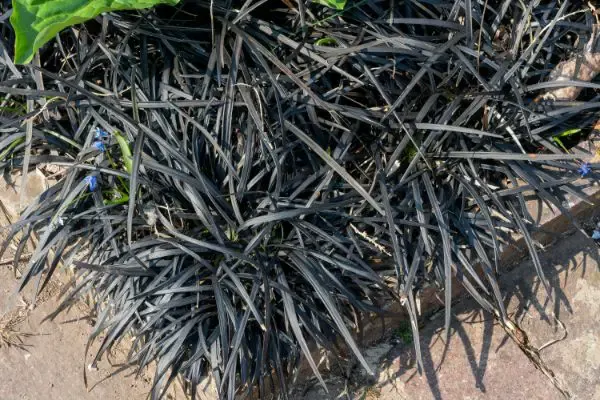
- Botanical name: Ophiopogon planiscapus
- Other names: Black mondo, lilyturf, monkey grass
Black mondo grass is an evergreen, perennial plant with beautiful purple-black leaves. It is a member of the family Asparagaceae and is native to Japan.
In summer, this plant blooms to produce racemes of sweet smelling, bell-shaped lavender or purple flowers which later develop to form blue-black berries.
When mature, the plant can grow up to 8 inches tall and spread up to 12 inches in width with the leaf blades less than an inch wide. The foliage of this plant is strap-like and linear with runner stems.
It is drought and salt tolerant. As the plant matures, it tends to send out rhizomes with new plants sprouting from them and it grows well in humus-rich, moist and well draining soil with regular watering.
This plant is a slow-grower making it ideal for a terrarium if you wish to have a piece of it within your living space and it does well both in full sun and partial sun.
6. Cactus
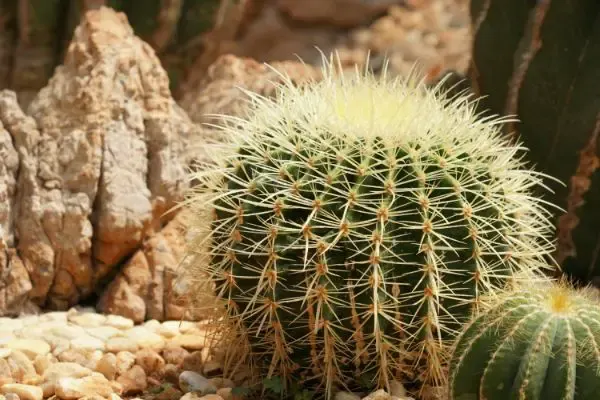
- Botanical name: Cactaceae
- Other names: succulents, prickly pear
Cactus is a perennial, succulent, flowering plant with easily distinct spines and thick stems native to America, Africa and Sri Lanka.
They are fascinating plants and a member of the well-known plant family Cactaceae, known for being able to withstand arid regions.
A major feature useful in the identification of cactus plants are their areoles. Areoles are bumps on the cacti plant out of which spines, hairs and flowers grow from in clusters.
These areoles tend to distinguish the cactus family from other succulent plants. Cactus plants produce beautiful flowers and they often bloom for a very short period of time.
The color of the flowers varies and can either be red, yellow, orange, white or pink. Their plants are mostly known to be green in color however they can have a range of colors like pink, blue, gray and even purple.
The diversity in cactus morphology is remarkable. Depending on the species, the shape and size of cacti can differ.
The succulent nature of the plant allows it to tolerate long periods of drought. Overwatering this plant is the easiest way to kill it.
Cacti require an open terrarium with an open lid to keep the humidity at a low as cactus plants are grown to thrive in really arid environments.
7. Creeping Fig
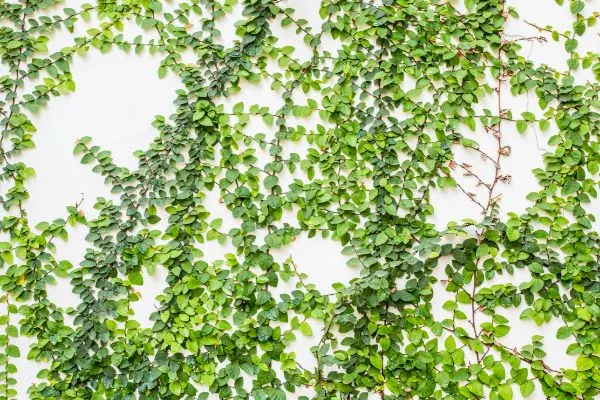
- Botanical name: Ficus pumila
- Other names: Climbing fig, fig ivy
Creeping fig is a fast growing, evergreen and perennial vine with small heart-shaped leaves growing alternately on its stem.
This fig plant is from the mulberry family Moraceae and is indigenous to East Asia particularly Vietnam, China and Japan. It can also be seen in some parts of the United States.
In their juvenile stage, they grow very small, soft green leaves and in their adult stage, these leaves mature to a dark green with a leathery texture which is considered less attractive compared to the juvenile leaves.
Their leaves are usually green but it also has variegated varieties. The variegated species are more striking, with either green and cream or green and white-tipped foliage.
The foliage is dense and has a glossy appearance making it look lush. It also does well in any lighting conditions and is a full sun to partial shade lover.
The creeping fig often yields fruit which are pale green in color but eventually turns to a deep dark purple color. It grows well in fertile, humus-rich, moist but well-draining soil.
Due to their small sized, glossy leaves and the fact that they hail from and prefer warm tropical climates, makes them an amazing choice for terrariums, particularly the sealed ones.
8. Croton

- Botanical name: Codiaeum variegatum
- Other names: Garden croton, variegated laurel
Croton is an evergreen, perennial shrub native to the Pacific Islands, Northern Australia, Malaysia and other parts of tropical Asia.
It is a member of the euphorbia family Euphorbiaceae and is mostly found in tropical climates.
In its natural habitat, it tends to grow as a bushy shrub reaching heights of about 10 feet tall and spreading as wide as 6 feet, but is much smaller as a houseplant.
The foliage of this plant is very beautiful and usually variegated. It has numerous varieties which vary in the leaf colors and patterns.
Normally, the leaves are green and can be streaked with pink, orange, yellow, red or even purple colors. However, there are some varieties in which the leaves grow with one bright color only fading as they age.
The leaves are shiny, ovate, quite leathery to touch and they can grow as long as 2 to 12 inches.
Since this plant is mostly found in tropical climates, they perform well in places of higher humidity and not so well in arid environments. So, they can be grown in terrariums and are a great choice for houseplants due to their striking foliage.
9. Curly Spider Plant
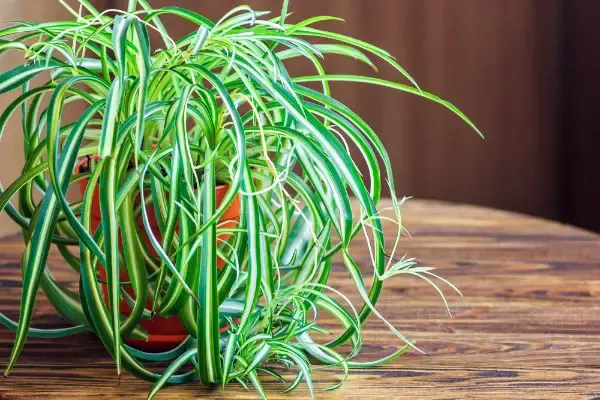
- Botanical name: Chlorophytum comosum ‘bonnie’
- Other names: Airplane plant, ribbon plant, spider ivy
The Curly spider plant is a compact, perennial plant with curly leaves native to Southern Africa. It is a member of the family Asparagaceae.
The curly leaves and compactness of this plant makes it easy to adopt as a terrarium plant. It thrives in moist environments and as such, requires high humidity. Spider plants grow really fast and can get as tall as 8 inches when grown indoors so occasional pruning is an essential.
Its foliage is variegated with green and white stripes. In spring down to summer, when planted outdoors, they produce white, star-shaped flowers with a heady scent, which are fascinating to pollinators like bees and butterflies.
If waterlogged, the curly spider plant can be easily susceptible to root rot and infestation by pests. So, it is best to plant it in a moist, well-draining soil.
The curly spider plant is literally an undemanding plant, easy to take care of, with beautiful foliage and its amazing ability in purifying the air in homes by reducing the amount of toxins present.
10. Golden Pothos
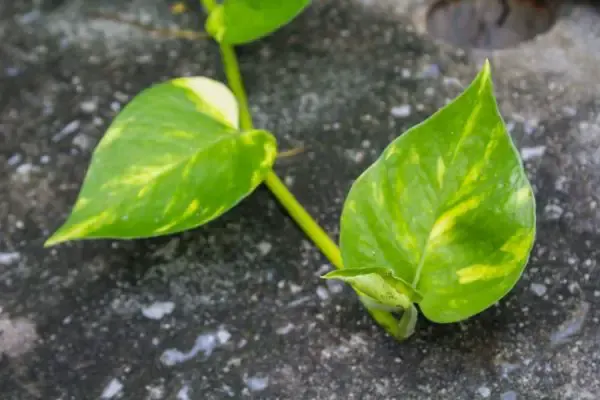
- Botanical name: Epipremnum aureum
- Other names: Devil’s ivy
Golden pothos is an evergreen perennial vine in the arum family Araceae. It has glossy, green leaves with yellow variegation and is native to Southeastern Asia.
It is an adaptable plant and incredibly resilient regardless of its environment. This species is considered invasive and is hard to kill.
This plant requires bright, indirect exposure to sunlight to keep the golden color of the leaves vibrant.
Although Golden pothos is a tropical plant and grows well in high humidity levels, they can still tolerate areas of low humidity.
11. Miniature Orchid
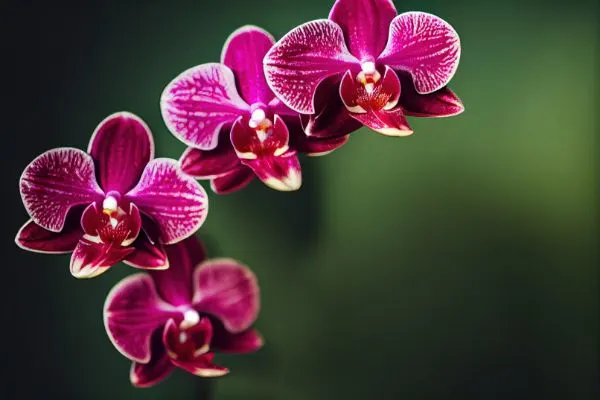
- Botanical name: Epidendrum fimbriatum
- Other names: Fringed star orchid
Miniature orchids are evergreen, orchid plants that grow on land, with some being epiphytic and they are native to tropical and subtropical regions in America like Bolivia, Ecuador, Peru and Venezuela.
They are a member of the family Orchidaceae and are perennial plants. In its mature stage, the plant produces small, white or pinkish-white flowers with random dots of purple on the top side.
This plant produces slender, cane-like stems and can grow to a height of about 8 to 10 inches making them ideal to grow in small spaces like terrariums.
They are hardy plants and are very low-maintenance. Miniature orchids require high levels of humidity, bright, indirect sunlight with regular watering to keep the plant hydrated.
12. Mood Moss
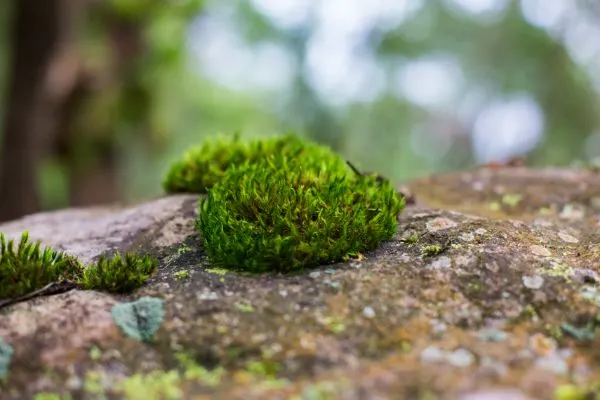
- Botanical name: Dicranum scoparium
- Other names: Broom moss, broom forkmoss, windswept moss
The mood moss is a beautiful plant known for its expressive and responsive nature to its environmental conditions. This plant is native to North America but can be found in Asia and Europe. It is a member of the family Dicranaceae and its natural habitat is moist woodlands and forests.
This plant grows in clumps like mini forests, and is about 3 to 4 inches thick growing up to 6 inches in height. It has a yellowish green to bright green foliage.
It does not have roots but has a modification to its bottom layer known as rhizoids which it uses to absorb nutrients and to anchor itself to surfaces.
This moss does well in moderately humidity areas. They are quite resilient; even in times of drought, the mood moss can tolerate it because they can resume photosynthesis when they are again saturated by rain.
Like most mosses, this moss performs well in medium to high indirect sunlight. Be sure to keep it away from direct sunlight as too much sun can damage the leaves making it look dull. The mood moss is a great plant for terrariums thanks to its attractive and lush foliage giving the illusion of a forest carpet.
13. Mother Fern
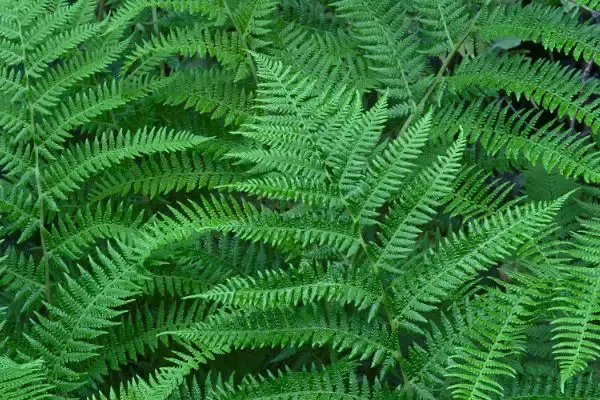
- Botanical name: Asplenium bulbiferum
- Other names: Chicken fern, mother spleenwort, New Zealand common spleenwort
The mother fern is an evergreen, tropical plant native to New Zealand. It is a member of the Spleenwort family of ferns Aspleniaceae. Its natural habitat is the bushy lands in New Zealand as that is where it is commonly found.
In terms of physical appearance, this plant is quite attractive with delicate, feather-like and finely cut foliage (fronds). They are a glossy dark green with the fronds arranged alternately on the sides of the central axis of the leaf.
The mother fern reproduces vegetatively. They have a distinctive feature of producing plantlets on its fronds that grow to about 2 inches in size and then fall to the ground, taking root and sprouting to form new ferns.
They can also be propagated by spores that develop in sori on the undersides of the frond. It does not bloom to form flowers or produce fruits.
It requires moist, well-draining soil and prefers partial shade or bright, indirect sunlight. These ferns appreciate high humidity and require frequent watering.
Due to its visual appeal and simplicity of cultivation, the mother fern is frequently grown as an indoor plant. It can be grown in combination with other ferns and foliage plants in terrariums to make a beautiful display.
14. Nerve Plant
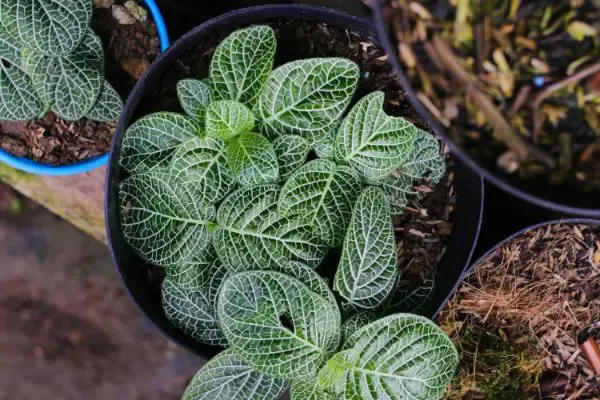
- Botanical name: Fittonia albivenis
- Other names: Jewel plant, mosaic plant, painted net leaf, silver threads
The Nerve plant is an evergreen perennial plant native to South America, particularly Peru. It is a genus of flowering plants in the acanthus family Acanthaceae.
Nerve plants get their name from their nerve-like appearance. They produce deep green leaves with prominent white, pink or red veins and have a slightly hairy stem.
They can grow as tall as 4 to 6 inches and spread as wide as 12 to 18 inches. They require partial or indirect exposure to sunlight for growth and require frequent watering.
Since this plant is a tropical plant, it is known to perform well in places of higher humidity levels, although they can tolerate places of low humidity for a very short period of time before going into hibernation or collapsing.
The foliage of this plant is very eye-catching and captivating. In summer, this plant develops to occasionally produce small, inconspicuous flowers that can either be red or white in color but are not very impressive in comparison with the leaves.
When grown indoors, they do well in terrariums because they often require a very damp environment to thrive. Nerve plants grow best in moist well-draining soils with a pH of about 6.5 and they are pretty resilient to attacks from pests.
As much as this plant loves moisture, care should be taken to avoid overwatering as this could cause the yellowing of leaves eventually leading to root rot.
15. Peacock Plant
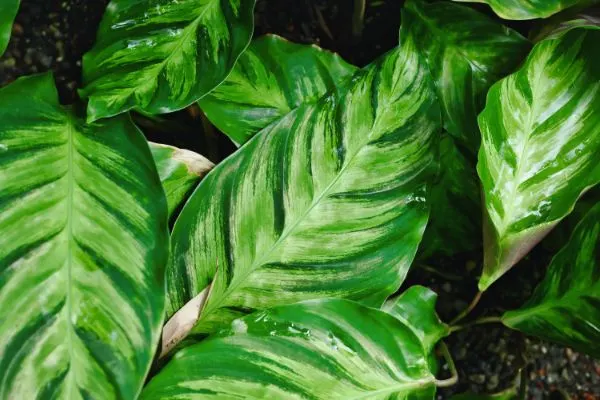
- Botanical name: Calathea makoyana
- Other names: Cathedral windows, prayer plant
The peacock plant is a tropical plant native to South America, particularly Brazil. It is a beautiful plant valued for its very attractive leafage.
This plant has large leaves that are ovoid in shape. The foliage is a dull green with the surface of the leaf having a feathered out appearance from the central axis of the leaf to the margins and streaked with different colors like cream, white, etc
The peacock plant is known for its beautiful two toned leaves. The top side of the leaves are a pale green while the underside of the leaves can either be a deep purple or burgundy.
This plant is nicknamed the “prayer plant” because of the movement pattern of the leaves. During the day, they rise towards the direction of the light while at nighttime, they relax; mimicking ‘praying hands’.
High humidity levels are important for the peacock plants to flourish. It requires frequent watering as well but balance must be maintained as overwatering this plant could lead to root rot while underwatering could result in browned up or curled leaves.
The flowers bloom in all seasons. They are white, quite small and inconspicuous. In comparison with their captivating foliage, the flowers of this plant are not impressive and are basically ornamentally insignificant.
16. Strawberry Begonia
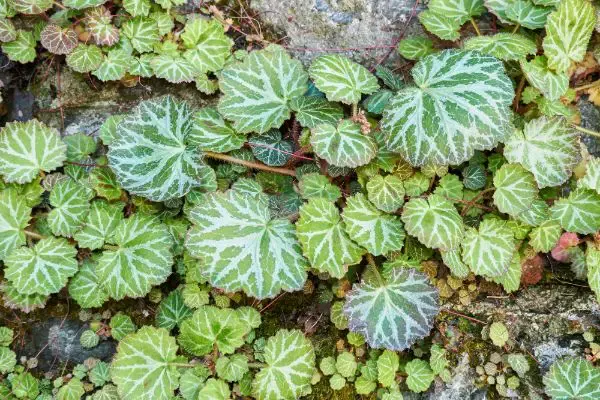
- Botanical name: Saxifraga stolonifera
- Other names: Creeping saxifrage, mother of thousands
The strawberry begonia is a beautiful, captivating plant native to Asia. Despite its name, this plant is not related to either the strawberry or the begonia family but is a member of the Saxifraga family.
As a matter of fact, it gets its name from them because of its leaves which share similarities to the begonia and its runners which are like that of a strawberry.
The foliage of this planet is dark green with prominent silver veins. The leaves are hairy and heart-shaped with red undersides and stems.
In its habitat, it grows in moist areas like rock crevices and forests so they tend to prefer moderate to high levels of humidity.
During springtime, the strawberry begonia blooms to produce clusters of pretty, small, white flowers. One very distinct feature about the strawberry begonia is its stolons.
In the mature stage of the plant, it sends out a set of its stolons with little plants growing at each of their nodes. These plantlets can be removed and replanted individually to form new plants. Its uniqueness and beautiful foliage makes it a popular choice for a plant to grow in a terrarium.
17. Venus Flytrap
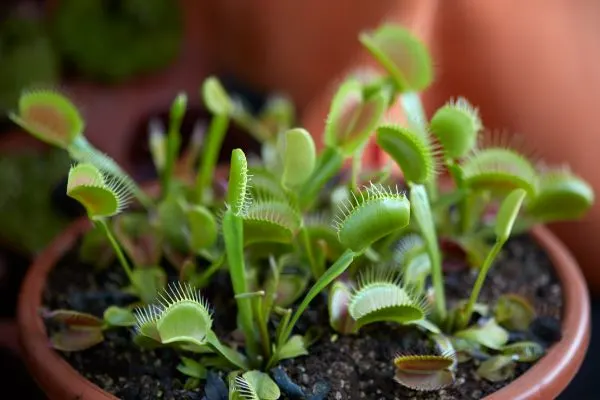
- Botanical name: Dionaea muscipula
- Other names: N/A
Carnivorous plants are a fascinating species of plant known to attract, kill and digest prey, absorbing their nutrients and using it to develop themselves.
There are quite a number of these plants around the world on every continent with the Venus flytrap being the most notorious or iconic in this case.
The Venus flytrap is a carnivorous plant native to the Southeastern region of the United States. It is a herbaceous perennial plant and a member of the family Droseraceae.
It has divided leaves and spikes on each end which help create a seal. It utilizes the trapping mechanism described as a “snap trap” based on the rapid movements of their leaf when it comes in contact with a potential prey.
There are sensitive hairs, also referred to as trigger hairs on the divided leaf lobes and when they are bent or touched, they close rapidly. So, when insects land on between the leaf lobes, they close immediately, trapping and killing the insect.
In spring, the plant blooms producing white flowers on leafless stems with ovate shaped berry-like fruits. This plant can be grown in terrariums provided humidity can be controlled as the Venus flytrap is a moisture loving plant.
18. Watermelon Peperomia

- Botanical name: Peperomia argyreia
- Other names: Watermelon begonia
The watermelon peperomia is a unique plant appreciated for its distinctive and eye-catching foliage which looks like the skin of a watermelon. It is a member of the Piperaceae family and is native to South America, particularly Brazil, Ecuador, Venezuela and Bolivia.
This plant is quite small with fairly large leaves. The leaves are attached to long, slender stems and are ovate in shape with a thick, fleshy texture. They can grow as tall as 8 inches.
On their foliage is a mix of green and cream or silver-gray color striped in a manner similar to watermelons. Their petioles and stems are red in color.
During summer, the watermelon peperomia produces green flowers on slim stalks though in comparison with their leaves, the flowers are not as showy and attractive.
Direct sunlight is best avoided for this plant so it does not scorch the attractive foliage. The plant does relatively well in moist, well-draining soil and high humidity levels.
Infographic of Great Terrarium Plants

FAQs
Do plants grow well in terrariums?
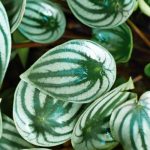
Terrariums are a great way to include plants in your indoor living space and yes, plants do grow well in terrariums under the right conditions for growth and with proper care and maintenance.
What are the types of terrariums?
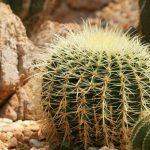
There are two main categories of terrariums and they are the closed and open terrariums.
The closed terrarium is useful for tropical plants that require high humidity levels while open terrariums are useful for arid plants that require really low humidity levels in the atmosphere to thrive.
How do closed terrariums survive without air?
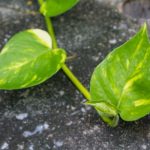
Closed terrariums normally create a self sustaining environment for tropical plants by providing a very humid atmosphere to aid their growth.
Since the terrarium is sealed and transparent, it makes use of light and heat energy from the sun carrying out three naturally occurring processes: photosynthesis, respiration and the continuous water cycle.
Can I grow carnivorous plants in terrariums?

Carnivorous plants derive most of their nutrients from ingesting insects, rather than from the soil. They can be grown in terrariums and since they are moisture loving plants, closed terrariums are recommended.
Although, you may be in a dilemma because if they are left to grow in closed terrariums, how would they get to attract and feed on insects for nutrition?
There is an option of directly supplying these plants their prey or catering to their respective needs depending on the terrarium layout.
What kind of care do terrariums require?

Terrariums require regular or occasional watering which is dependent on the type of plant being cultivated and its requirements.
They also need to be exposed to bright but indirect sunlight and care should be taken to avoid them being exposed to direct sunlight as their leaves could get scorched.
Terrariums also require a well-draining soil rich in humus and occasional pruning for maintenance and to cut off diseased part of the plant or pest ridden parts to avoid possible spread to other parts of the plant.
What type of plant is suitable for a terrarium?
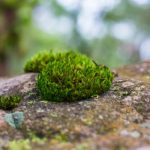
Various plants can grow in terrariums. You may want to consider mostly plants that can tolerate high humidity levels because of the nature of terrariums as they tend to entrap moisture though, there are open terrariums for arid-loving plants.
Another factor is the growth rate of the plant and their ability to tolerate indirect light. Some of these plants include succulents, ferns, mosses, air plants and carnivorous plants.
Conclusion
Terrariums provide wonderful opportunities to have a piece of nature with you in your home or office, in miniature controlled environments. We have listed and explained above eighteen (18) of the best plants for terrariums.
In the selection of best plants to grow in a terrarium, factors such as humidity tolerance levels, lighting, the type of terrarium being used and soil requirements are very important.
These factors should be considered before cultivation as they play a huge role in the growth behaviors and performance of that plant.
Every terrarium is different and has a unique charm and personality to it which it exudes when the aforementioned factors come together to create a mini functioning ecosystem for plants.
More cool plant stuff
